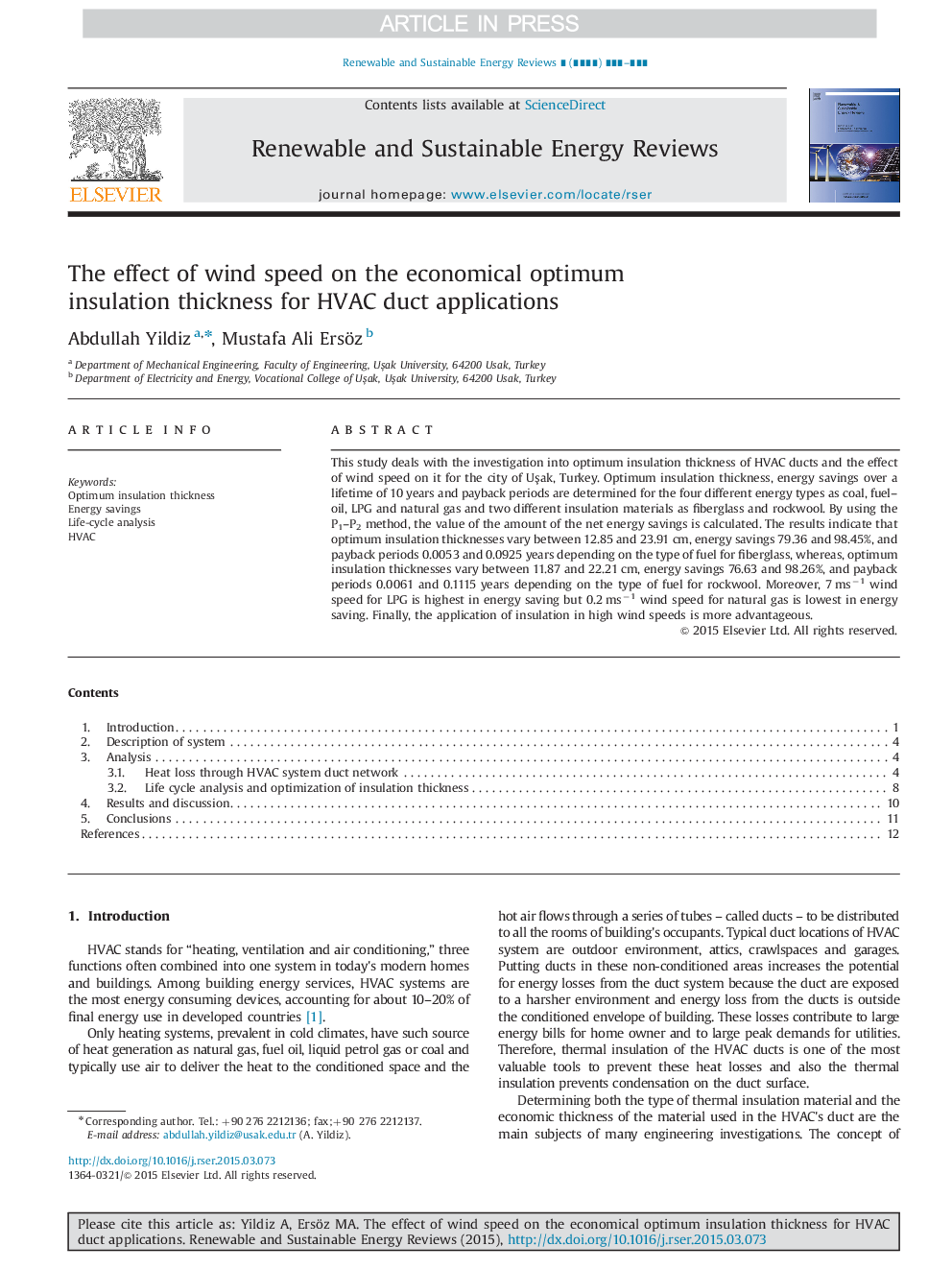| Article ID | Journal | Published Year | Pages | File Type |
|---|---|---|---|---|
| 8115533 | Renewable and Sustainable Energy Reviews | 2016 | 12 Pages |
Abstract
This study deals with the investigation into optimum insulation thickness of HVAC ducts and the effect of wind speed on it for the city of UÅak, Turkey. Optimum insulation thickness, energy savings over a lifetime of 10 years and payback periods are determined for the four different energy types as coal, fuel-oil, LPG and natural gas and two different insulation materials as fiberglass and rockwool. By using the P1-P2 method, the value of the amount of the net energy savings is calculated. The results indicate that optimum insulation thicknesses vary between 12.85 and 23.91Â cm, energy savings 79.36 and 98.45%, and payback periods 0.0053 and 0.0925 years depending on the type of fuel for fiberglass, whereas, optimum insulation thicknesses vary between 11.87 and 22.21Â cm, energy savings 76.63 and 98.26%, and payback periods 0.0061 and 0.1115 years depending on the type of fuel for rockwool. Moreover, 7Â msâ1 wind speed for LPG is highest in energy saving but 0.2Â msâ1 wind speed for natural gas is lowest in energy saving. Finally, the application of insulation in high wind speeds is more advantageous.
Related Topics
Physical Sciences and Engineering
Energy
Renewable Energy, Sustainability and the Environment
Authors
Abdullah Yildiz, Mustafa Ali Ersöz,
